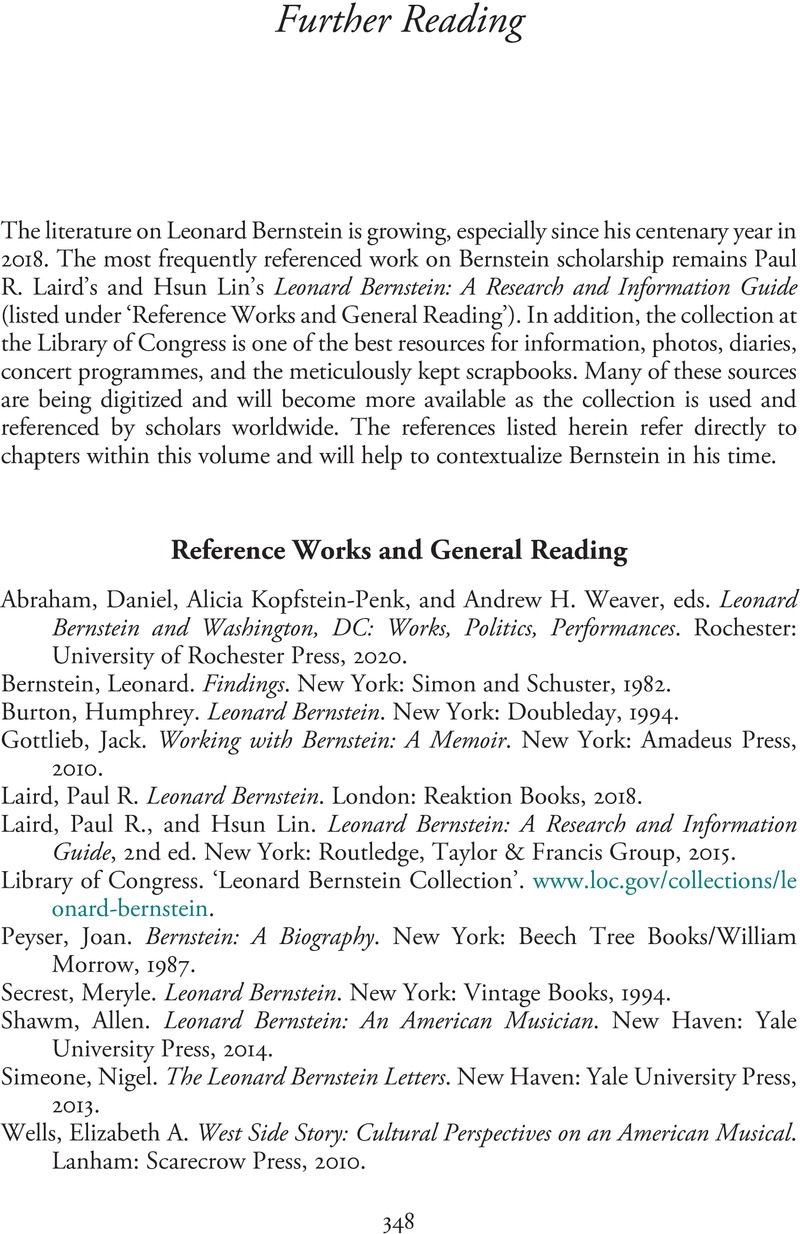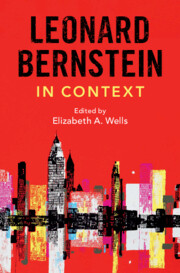Book contents
- Leonard Bernstein in Context
- Composers in Context
- Leonard Bernstein in Context
- Copyright page
- Contents
- Illustrations
- Musical Examples
- Contributors
- Preface
- Part I Bernstein’s World
- Part II Conducting
- Part III Composition, Creation, and Reception
- Part IV Bernstein as Musical and Cultural Ambassador
- Part V Connections
- Part VI The Legacy
- Further Reading
- Index
- References
Further Reading
Published online by Cambridge University Press: 06 April 2024
- Leonard Bernstein in Context
- Composers in Context
- Leonard Bernstein in Context
- Copyright page
- Contents
- Illustrations
- Musical Examples
- Contributors
- Preface
- Part I Bernstein’s World
- Part II Conducting
- Part III Composition, Creation, and Reception
- Part IV Bernstein as Musical and Cultural Ambassador
- Part V Connections
- Part VI The Legacy
- Further Reading
- Index
- References
Summary

- Type
- Chapter
- Information
- Leonard Bernstein in Context , pp. 348 - 354Publisher: Cambridge University PressPrint publication year: 2024

